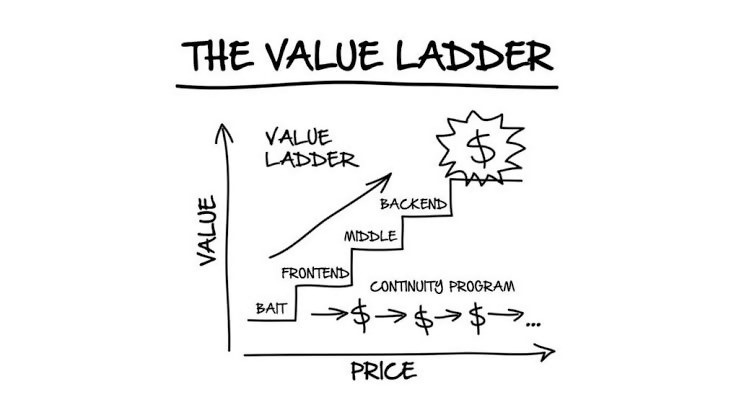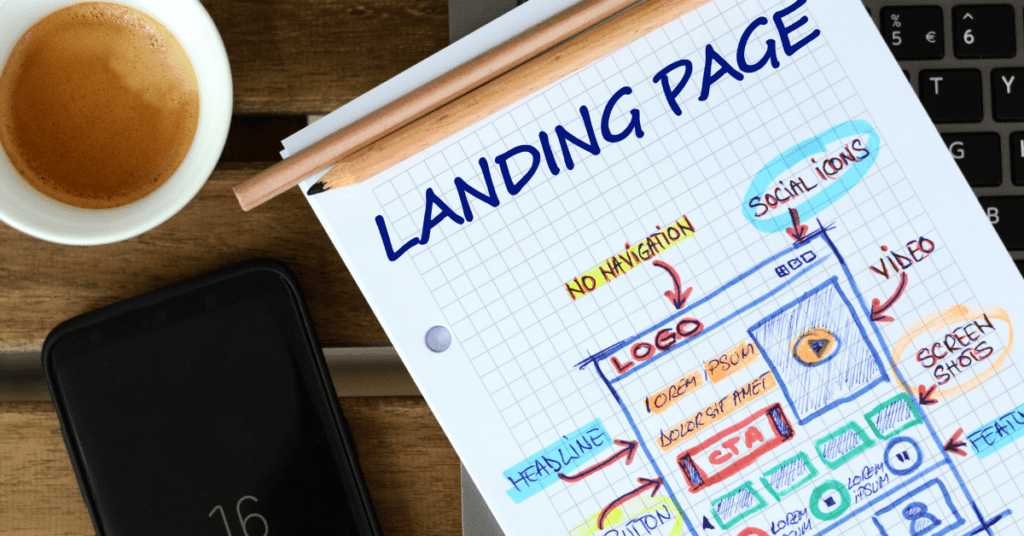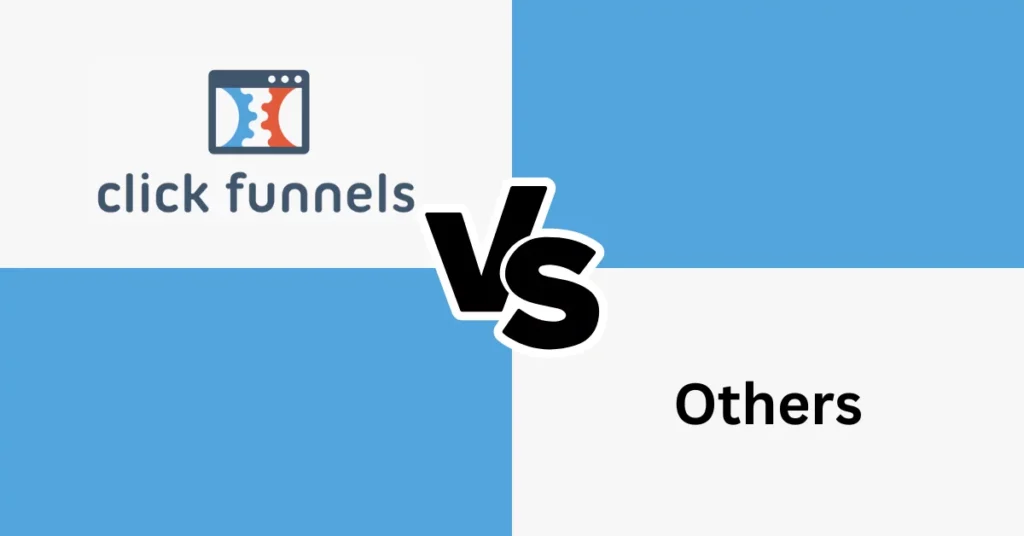The world is changing very fast, especially when you found a new idea or opportunity, time is the most important to capture the market before your competitor does. You must be able to move fast, adapt to changing circumstances, tweak your process, and win the market. Value Ladder Sales Funnel is a very good way to convert your prospects.
This means that you can’t afford to spend ages developing your sales process – you need to get it up and running ASAP. The clue is not making it perfect but launching it. You shall launch and test which one works. And then, optimize it based on the result from the market.
It used to take a long time to develop a website or sales funnel previously. But now, with all the tools and platforms, you can start and build your sales funnel & website fast and run A/B testing.
Of course, that’s easier said than done. The development of the sales process can be incredibly time-consuming if you don’t know what you are doing. Starting with a proven template is good, but getting a good sales copy to work with your sales funnel is hard. It’s an art that needs to be designed to persuade a sale.
That’s why it’s so important to learn how to create sales funnels efficiently. Once you have that process created, building funnels becomes much easier and faster.
Join our 5-Day Challenge today. It’s free!
What Is a Value Ladder Sales Funnel?
A sales funnel is a sales process or simply say a series of pages that guide your audiences from getting into your store to making sales.
A typical sales funnel will have 4 stages – Awareness, Interest, Desire, and Action (AIDA). Each stage focuses on doing one thing and bringing the prospects into the next stage to be closed.
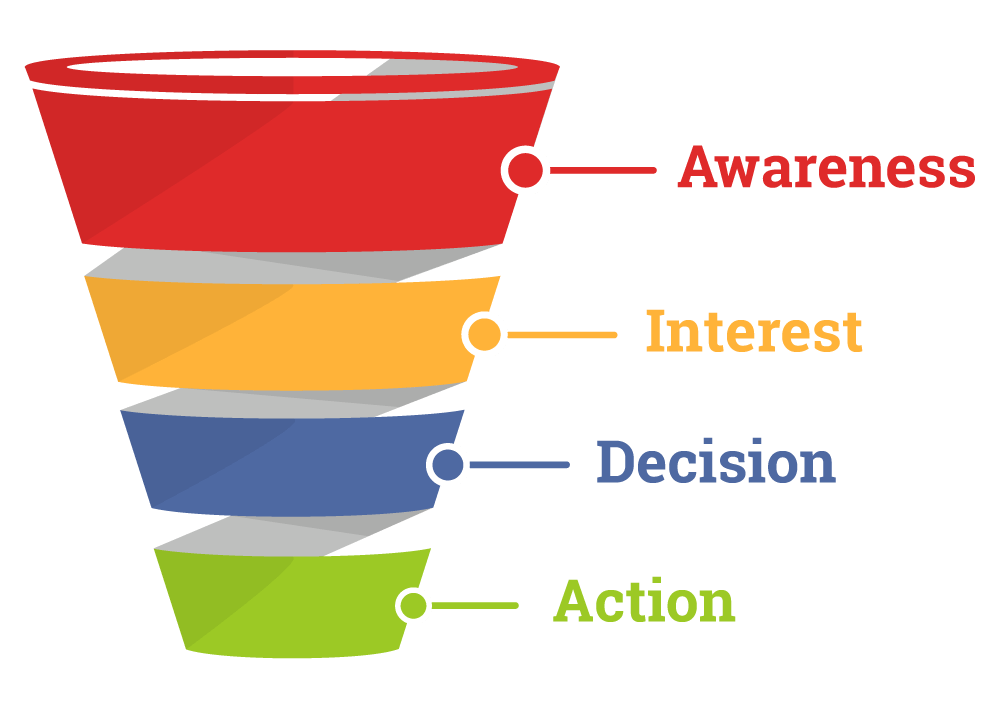
And, throughout the years of creating the sales funnel, we believed the most effective way to create more sales and increase your average cart value is the Value Ladder sales funnel. In the value ladder itself, there are 4 different stages :
4 Stages of Sales Funnel
- Bait. You offer the potential customer your lead magnet in exchange for their email address.
- Frontend. You offer the potential customer your least expensive and least valuable product or service.
- Middle. You offer the customer a more expensive and valuable product or service.
- Backend. You offer the customer your most expensive and most valuable product or service.
And at the end of the funnel, you can also offer a subscription service/product that generates recurring revenue monthly. This means you only do the sales once, but you will be getting paid continuously every month. In between the funnel, it’s like a logical decision-making flow where people will say yes/no to your offer.
Here, we do recommend adding products for upsells, downsells, and cross-sells to these five core offers in order to maximize your revenue.
The reason why this sales funnel works so well is that it is not a hard sell for your prospects. It allows you to:
- Start the relationship with that person by offering value for free.
- Nurture that relationship by continuing to provide free value via email.
- Build trust by providing progressively more paid value at each stage.
In the end, it is easier to buy something for someone you know and trusts compared to a stranger.
How To Build a Value Ladder Sales Funnel
While it may seem complicated to build the entire Value Ladder sales funnel, let’s separate it into smaller pieces so you can learn it even if you are new. In basic, you will need 3 things. A lead magnet, landing page, offers, and subscription. If you don’t have it all now, it’s totally fine.
You don’t need all that to get started – a lead magnet + a frontend offer are enough to build a basic Value Ladder sales funnel. Even if you don’t own your product, you can always try to Whitelabel PLR content as your lead magnet.
Here’s how…
Step #1: Create a Super Valuable Lead Magnet
A lead magnet is a freebie that you offer to bribe your potential customers in exchange for their email addresses or other contact details. Here be reminded, that we want more touchpoints for our potential customers. But, you don’t overcomplicate this process as people might leave your landing page if it is too hard for them to claim the freebies.
A lead magnet can be anything that they can either download to their device or access online:
- A report.
- An ebook.
- A webinar.
- A video course.
- An email course.
- etc…
A small hack for the lead magnet, it shall be easy to create and provides the biggest value for your audience. Video courses, step-by-step guides, templates, or cheat sheets are the best lead magnets as they provide instant value to the audience. Instead of reading hundreds of pages of ebooks, people want an instant result. Hence, making these items high in perceived value.
What’s important is that:
- Your lead magnet offers a solution to a problem that the potential customer is struggling with.
- That problem is either the same or related to the one that your frontend offer addresses.
Ideally, you want to have a lead magnet that serves as a free sample or complimentary product of the value that the potential customer can expect from your front-end product.
For example:
If you are promoting a SAAS platform like ClickFunnels, you can provide share funnels, a lead magnet creation guide, or a video course teaching how to use it.
It shall be unique, and able to provide value to your potential customers. In some cases, you may want to charge a small amount of money for the lead magnet. This action is to recover back your traffic cost or to qualify the visitors. Those who are willing to buy your low price point lead magnet product will be most likely to be upsold to other products.
This lead magnet setup ensures that the transition from the Bait stage to the Frontend stage is as seamless as possible because there’s a logical progression from the lead magnet to the frontend offer.
You must focus on this step and your lead magnet. This will decide whether your prospects that enter your value ladder sales funnel move up the ladder or not.
Do remember this, potential customers won’t give you their email addresses unless you offer them something super valuable in return. And when they do, they will be most likely to buy your next offer.
Ideally, you want your lead magnet to be something that people would happily pay money for, but that you choose to give away for free. It has to be that good! The value they are getting shall be over 10x the money they paid for.
Step #2: Create a Landing Page for That Lead Magnet
A landing page is a web page designed to convert your prospects. The goal of a landing page is to get your potential customer to give you their contact details, normally email addresses. Don’t try to overcomplicate things by adding other offers on this page. It will be handled on the next page.
We recommend creating a lead magnet landing page because that is a much more effective way of converting visitors into leads than promoting your lead magnet on your website.
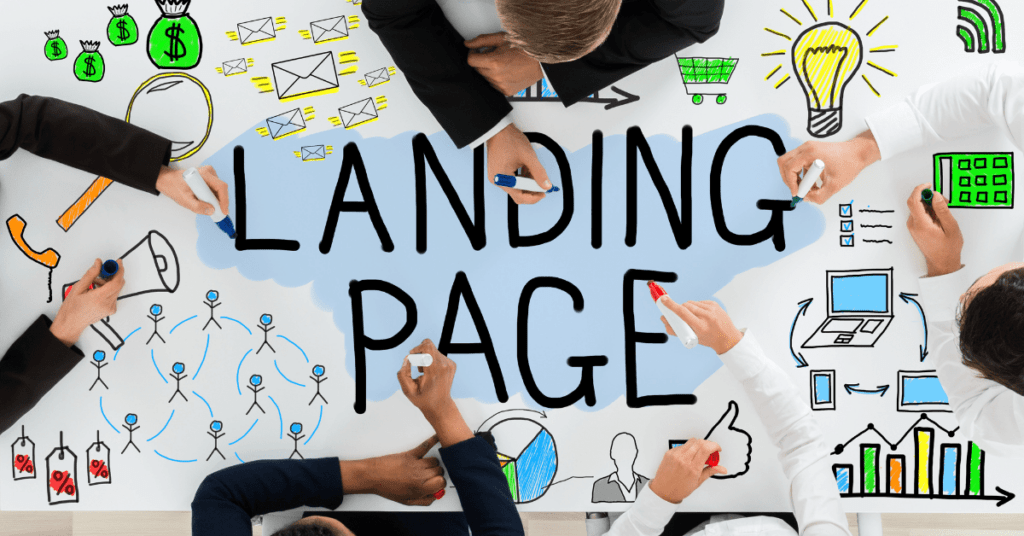
A landing page need not be complicated. You can start with a basic squeeze page that has these three key elements:
- A headline that conveys what your offer is all about.
- An opt-in form where the potential customer can type in their email address. It can either be shown immediately or displayed after they click the call-to-action button.
- A call-to-action button that encourages the potential customer to get the lead magnet.
You might also want to experiment with various other page elements such as relevant images, additional copy, social proof, etc. Clearly tell the prospects, what you are giving them in these lead magnets, what value they are getting, and last, how to claim that.
All elements might work on each page. You may add or reduce the elements on your landing page. Always create a few versions and A/B test it to see which works. During your A/B test, always test 1 element each time so you will know exactly does the changes work.
Step #3: Create an Irresistible Frontend Offer
It’s important to understand that the purpose of the frontend offer isn’t to make you loads of money, it’s to convert leads into paying customers. And to cover your traffic cost, so you can have an unlimited budget for your ads.
For your frontend offer, we suggest that it\’s designed specifically so that people will be FOMO if they don’t buy it. It can be something that the value is 10x the amount they are paying for. Or something like a limited-time offer, where after this, they will not be seeing this offer anymore.
Here’s a simple formula that you can use to create an irresistible frontend offer:
High Value + Low Price = Irresistible Offer
It’s best to price it at $7. Why?
Because it’s a price point that isn’t low enough to make the potential customer sceptical of the value of your frontend product but also isn’t high enough to make them stop and think twice before purchasing it.
Again, the aim here is to convert leads into paying customers, so you want to make sure that your front-end offer is a no-brainer. Keeping the price within the impulse buy range can help with that.
Join our 5-Day Challenge today. It’s free!
Step #4: Create a Sales Page For That Frontend Offer
Your front-end offer needs a dedicated sales page. Since the price point is $7, it doesn’t need to be fancy. Straight to the point, a good offer will work on its own at this price point.
People will just click and purchase at this price point. Also, to push them to purchase, you may offer a 30-day money-back guarantee. This will take away the risk of them being sceptical about buying something they don’t need. But trust me, people seldom ask for a refund.
In your script, you need to understand this most important copywriting principle to sell well. It is the distinction between features and benefits:
- A feature is a quality or a function of a product (e.g. “These shoes are waterproof”).
- A benefit is a value that the customer will derive from that product (e.g. “These shoes will keep your feet dry!”).
People buy based on benefits, which is why you should focus on them in your headline, subheadline, and sales copy. How will your product make the customer’s life better? Emphasize that.
We also advise adding as much social proof to your sales page as possible:
- Mention relevant accomplishments, credentials, numbers, etc.
- Display “As Seen On” media badges.
- Display customer testimonials.
There’s no such thing as too much social proof provided that it doesn’t distract the potential customer from buying the product. Reviews are good as is the real feedback from past buyers.
Step #5: Create a Follow-Up Email Sequence
We don’t recommend hitting the potential customer with a sales pitch the moment they give you their email address. This will scare them away, hence you need to nurture the list. Build relationships, give value, and then only you sell.
The email sequence is designed to help you with this:
- Email #1: Who Are You? Introduce yourself to your new subscriber. Let them know what they subscribed to and what to expect.
- Email #2: Where Did You Come From? Tell them your origin story. How did you come to do what you do now? Your challenges and obstacles faced in the journey.
- Email #3: What Do You Do? Explain what it is that you do in more detail – what problems are you addressing, what solutions are you offering, what makes you different from everyone else, etc.
- Email #4: How Did You Gain This Expertise? Tell them your \”aha\” moment and how you find the solution you are selling. Build your authority by mentioning relevant education, credentials, accomplishments, etc. Why should they listen to you?
- Email #5: Who Do You Do This For? Clearly define your ideal customer + share a case study on how you helped someone like that.
- Email #6: How Can You Do It For Me? Pitch your front-end product.
Note that only the last email is a sales email where you ask the new subscriber to buy something from you. All the previous emails serve the purpose of creating a connection, building a relationship, providing value, and establishing trust.
In each email, tell them what to expect for the next day\’s email. As a trailer, they will be looking forward to the next email. These emails should also end with a call to action where you ask the new subscriber a question and then encourage them to hit the reply button and respond to it.
Join our 5-Day Challenge today. It’s free!
Bonus Step #1: Add a Downsell to Your Frontend Offer
A downsell is an offer that is a downgrade to the initial offer that the potential customer has already rejected. This offer will only be presented after one says no to the original offer. It may be due to the price point or they don’t need so much of the product.
As a marketer, even if being rejected the frontend offer, we will still try to make a sale. So, instead of letting them go, you can present them with a down-sell offer.
However, the down-sell should be a separate product – you should never discount your original offer in an attempt to get the sale.
You can downgrade from the initial offer by narrowing down the scope. Offer a lite version or other similar product that is at a lower price point.
Say, if your front-end offer is a video course, your down-sell could be the first part of the video series that they can watch on their own to get started.
Alternatively, you can also offer for them to join your webinar with minimal cost so you can further upsell them the course in the webinar.
A price point for a front-end offer down-sell should be $2.99. Just make sure that you account for payment processing fees when you are running numbers on this.
Also, if you are wondering why even bother selling something for such a ridiculously low price, remember that the purpose of the front-end offer is to convert leads into paying customers. You will be making big money at the backend.
Bonus Step #2: Add an Upsell to Your Frontend Offer
This is another step that is highly advisable. Some customers are in a hyper mode where they will buy everything you offer. By offering better offers in the next sales, it will be more likely for them to make a purchase. At the same time, reduce your need to bring in new leads. Just convert the existing one.
An upsell is an offer that is an upgrade on the initial offer that the potential customer has already accepted.
Meaning, if the potential customer agrees to buy your frontend product, you want to present them with an upsell.
Here’s a formula for an irresistible upsell:
A Drastic Increase in Value + a Small Increase in Price = Irresistible Upsell
So figure out a way to add a ton of extra value to your front-end product, then only charge a few extra bucks for it (say, $9.99).
Those few extra bucks might not seem like a big deal but they can add up to a lot of money throughout the lifetime of your business.
Start Building Your Value Ladder Sales Funnel
While the process is simple in words, building a high conversion one is hard. So, get started to work. To build a sales funnel easily, we always use ClickFunnels. If you are wondering how to start, you can always start with the 14-day free trial here.
